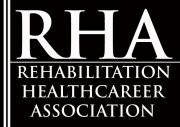Physical Therapy Aide / Technician
COURSE PREREQUISITE(S): High School Diploma , GED , Entrance Test
PROGRAM DURATION: 3-4 Months
AT COMPLETION ELIGIBLE FOR : NATIONAL CERTIFICATION EXAM
May become eligible for 3 National Certification exams
- Certifed Rehabilitation Therapy Technician
- Certified Personal Trainer Specialist
- Certified Restorative Aide
COURSE OUTLINE :
The goal of this course is to advance the knowledge of the student through the information offered in the lessons.
Physical therapy aide provides non-technical,clerical duties
The topics are:
Physical Therapy Aide Module 1 (Medical Terminology)
Basic Word Structure
• Suffixes and Prefixes
• Organization of the Body
• Body Systems and Their Functions
• Diagnostic Tests and Procedures
• Common Abbreviations and Symbols
Physical Therapy Aide Module 2 (Introduction to Physical Therapy)
The Rehabilitation Team
• The Role of the Physical Therapy Aide
• Career Opportunities for the Physical Therapy Aide
• Medical Ethics and Medical Law
• Legal Issues in the Workplace
• Communicating Effectively in the Physical Therapy Setting
• Medical Terminology and the Medical Record
Physical Therapy Aide Module 3 (Scientific Principles, Medical Disorders, and Safety Issues)
• Basic Structure and Function of the Human Body
• Applied Anatomy and Physiology of the Musculoskeletal System
• Joints and Movement
• Diseases and Disorders of Bones and Joints
• Safety in the Workplace
• Practicing Good Body Alignment
• Asepsis and Infection Control & Performing Proper Hand Washing
• The Human Skeleton & Major Muscles of the Body
Physical Therapy Aide Module 4 (Patient Preparation )
• Preparation for Patient Care
• Body Mechanics, Verbal Commands and Transporting Techniques
• Turning and Positioning the Patient
• Supine, Prone, Side-lying, and Sitting Positions
• Transferring the Patient & Preparation for Beginning of Transfer
• Standing, Sitting, and Bathtub Transfers
• Draw sheet Transfers &Pneumatic Lift Transfers
• One-person Transfers from Floor to Wheelchair
PHYSICAL THERAPY AIDE

Job Outlook
According to the US Department of Labor, Employment is expected to grow much faster than average because of increasing demand for physical therapy services. Job prospects for physical therapist assistants are expected to be very good. Aides may experience keen competition for jobs.
Employment change. Employment of physical therapist assistants and aides is expected to grow by 35 percent from 2008 through 2018, much faster than the average for all occupations. Changes to restrictions on reimbursement for physical therapy services by third-party payers will increase patient access to services and, thus, increase demand. The increasing number of people who need therapy reflects, in part, the increasing elderly population. The elderly population is particularly vulnerable to chronic and debilitating conditions that require therapeutic services. These patients often need additional assistance in their treatment, making the roles of assistants and aides vital. In addition, the large baby-boom generation is entering the prime age for heart attacks and strokes, further increasing the demand for cardiac and physical rehabilitation.
Medical and technological developments should permit an increased percentage of trauma victims and newborns with birth defects to survive, creating added demand for therapy and rehabilitative services.
Physical therapists are expected to increasingly use assistants and aides to reduce the cost of physical therapy services. Once a patient is evaluated and a treatment plan is designed by the physical therapist, the physical therapist assistant can provide many parts of the treatment, as directed by the therapist.
Physical therapy aide training in new jersey







